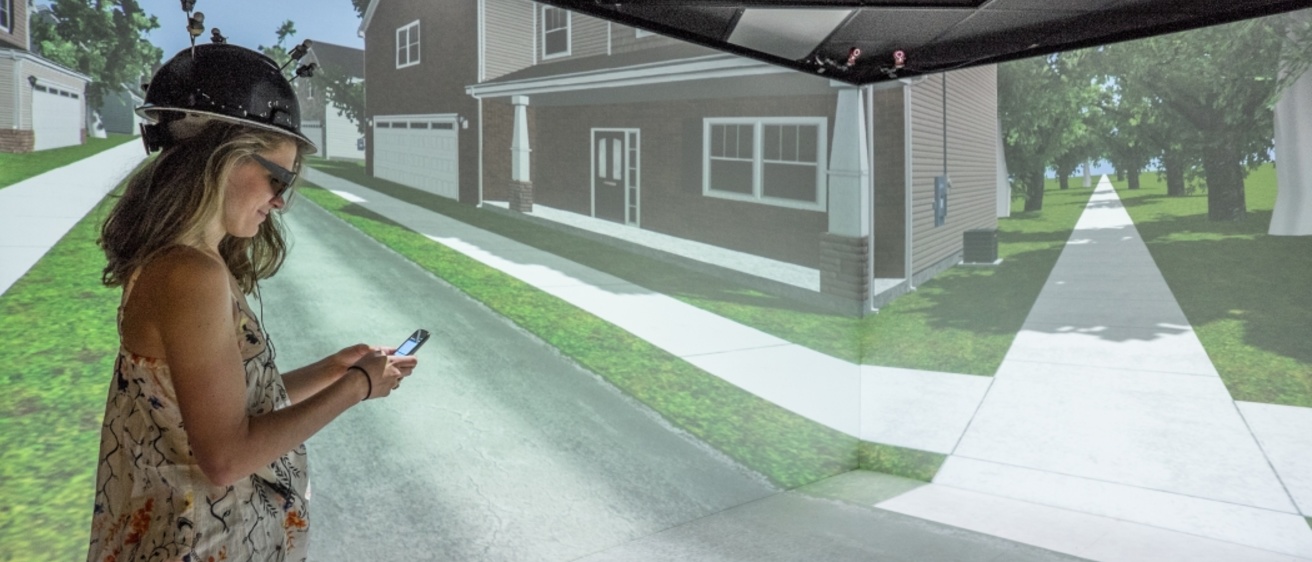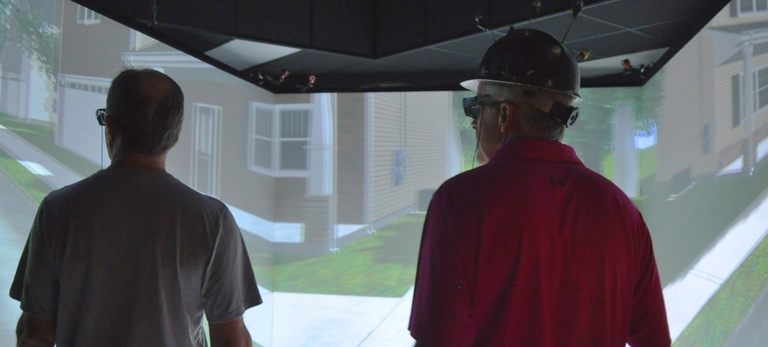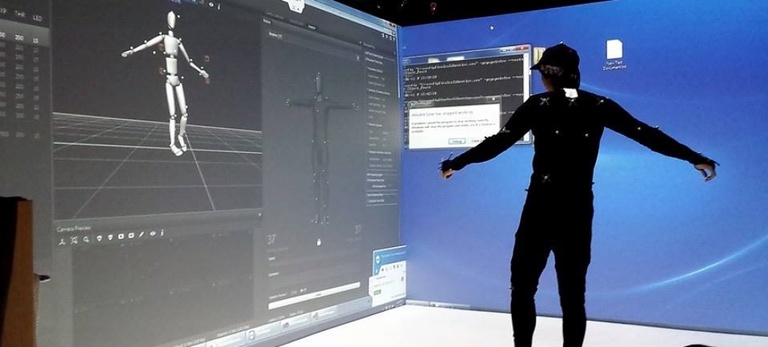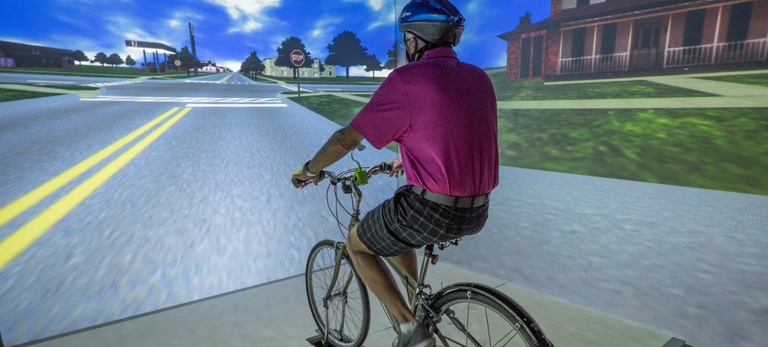Inviting Dads: Parent-Child Road Crossing Study in a Virtual Environment
We are currently recruiting eligible fathers and their 7- to 9-year-old children to participate in our study examining how children and parents cross roads together in a virtual environment.
Bicycling & Pedestrian Simulator Research
Bicycling injuries represent a significant public health problem in the United States. Five- to 15-year-old children represent a particularly vulnerable segment of the population, having the highest rate of injury per million cycling trips. Motor vehicles are involved in approximately one-third of all bicycle-related brain injuries and in 90% of all fatalities resulting from bicycle crashes. Many of these collisions between bicycles and motor vehicles occur at intersections. A critical first step in developing programs to prevent these car-bicycle collisions is understanding more about why such collisions occur. Our work uses virtual environment technology to examine the factors that may put children at risk for car-bicycle collisions when crossing intersections.
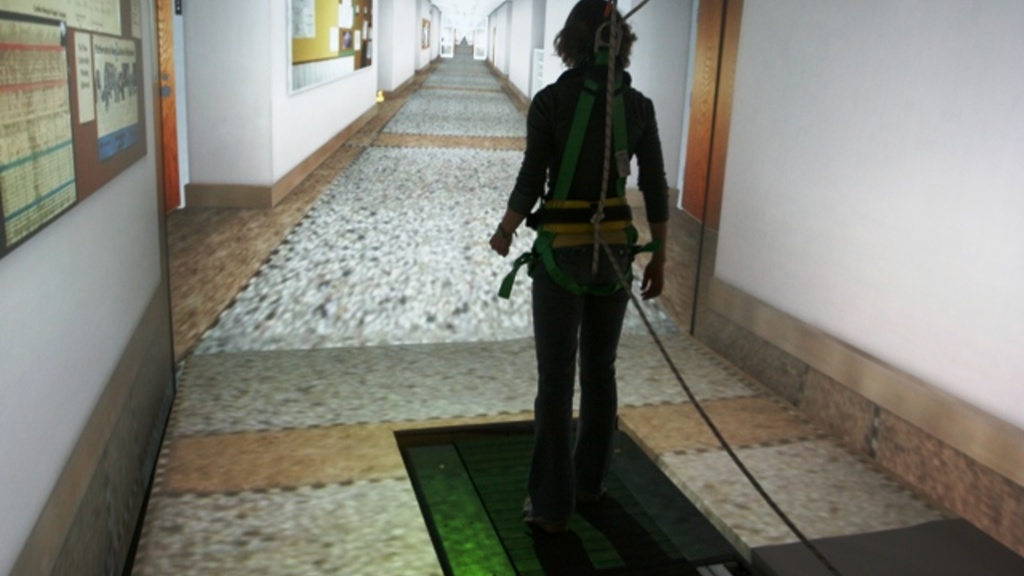
Distance Perception & Perceptual-Motor Adaptation
Virtual environments have gained widespread use in recent years as a tool for studying human behavior. Problems ranging from how children make road-crossing decisions to how adults respond to social situations have been studied using various kinds of immersive virtual environments. Virtual environments have also been used as a tool for training new skills, particularly in cases where training in the real environment can be risky or dangerous. Given the growing use of virtual environments for research and training purposes, we are interested in understanding more about how people perceive and adapt to virtual environments. Broadly speaking, our work focuses on how experience in real and virtual environments affects how people perceive distance.
